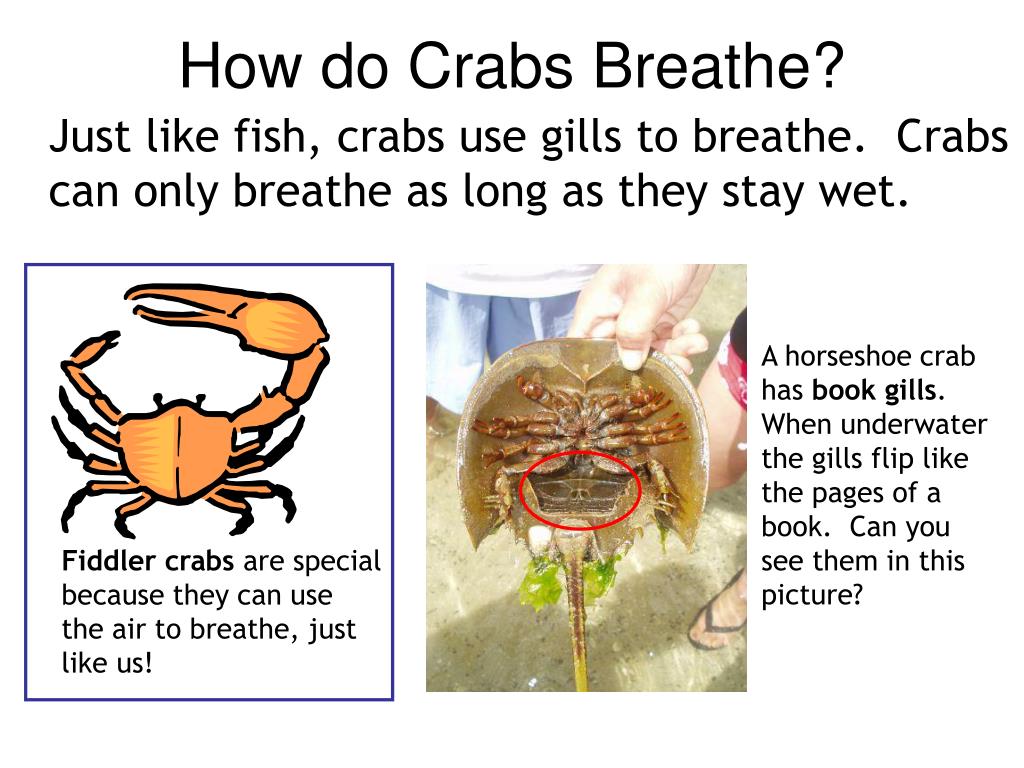Crabs have a fascinating and unique respiratory system that allows them to breathe both underwater and on land. Their ability to extract oxygen from both air and water is quite remarkable in the animal kingdom. In this article, we’ll take a close look at the anatomy and physiology of a crab’s respiratory system and examine how they are able to breathe in various environments.
An Overview of a Crab’s Respiratory System
Crabs belong to a group of animals called crustaceans Like all crustaceans, they have a hard outer shell called an exoskeleton. Under this protective covering, crabs have specialized organs and structures that allow them to breathe.
The main components of a crab’s respiratory system are:
-
Gills – Located under the carapace (top shell) near the crab’s walking legs. The gills are made up of hair-like structures called branchiostegal filaments
-
Gill chamber – The body cavity that houses the gills.
-
Scaphognathite – A flap-like structure that creates a current of water over the gills.
-
Articulating plates – Movable plates that can seal off the gill chamber.
Now let’s look at how these parts work together to allow a crab to breathe underwater and on land.
Breathing Underwater
Crabs are equipped with gills that enable them to extract oxygen from water, just like fish. The gills are located inside a protective gill chamber under the top shell.
To move water over the gills, crabs use a specialized appendage called the scaphognathite or gill bailer. It is a flap-like structure located near the base of the claws. As the scaphognathite moves back and forth, it creates a current that pulls water into the gill chamber.
The gills are made up of thin hair-like structures called filaments. Oxygen from the water diffuses into the bloodstream across the surface of these filaments. At the same time, carbon dioxide waste passes from the bloodstream into the water. The oxygenated blood then circulates through the crab’s body to supply tissues and cells.
Crabs can pump water over their gills continuously using the scaphognathite. This allows them to extract enough oxygen to meet their needs while submerged.
Breathing On Land
Unlike fish, crabs can survive on land for extended periods. But they still need to keep their gills moist in order to breathe. Crabs have special adaptations that allow them to retain moisture around their gills when out of water.
Sealing the Gill Chamber
Crabs can use articulating plates to tightly seal off the opening to their gill chamber. This prevents the gills from drying out. These plates interlock and create an airtight barrier.
Storing Water
Crabs can store water in their gill chamber, blood, and other body parts. This helps keep the gills moist. The lining of the gill chamber absorbs oxygen from the air, allowing gas exchange even without water flowing continuously.
Accessing Moisture
When on land, crabs seek out moist environments like damp vegetation, burrows, and tidepools. This allows them to replenish the water supply in their gill chamber. The moisture around their gills lets them continue breathing air.
Some crabs, like coconut crabs, have even more adaptations for terrestrial life. They have a specialized gill lining that functions almost like a lung, absorbing oxygen from the air. This allows them to breathe without needing access to water sources.
Breathing Underground
Crabs that dig burrows face the challenge of getting enough oxygen while underground. Some burrowing crabs create chimney-like structures that extend above the surface to improve air circulation. Others simply minimize activity to conserve oxygen.
Interestingly, fiddler crabs can reverse the flow of water over their gills while burrowed. This pulls fresh air down into the tunnel rather than stale air up from the bottom. It allows them to breathe underground for long periods.
Unique Adaptations in Different Crab Species
While all true crabs have gills, some species have modifications that improve their ability to breathe in specialized environments:
-
Land hermit crabs have feather-like gills that increase their surface area for air exposure.
-
Mud crabs have gills that are resistant to clogging when buried in sediment.
-
Semi-terrestrial crabs have gill chambers that seal tightly to retain internal moisture on land.
-
Freshwater crabs have gills adapted to absorb oxygen from water with low salt content.
Frequently Asked Questions
How long can a crab survive out of water?
Most aquatic crabs can survive 1-3 days out of water if they keep their gills moist. Some terrestrial species like coconut crabs can breathe air indefinitely and drown if submerged underwater for too long.
Why don’t crab gills stick together when dry?
Crab gills have hair-like filaments and reinforced support structures that prevent the delicate tissues from collapsing and sticking when out of water. This allows them to function even with minimal moisture.
Can crabs breathe through their shells?
No, crabs cannot breathe through their protective exoskeletons. They must draw water or air over their specialized gills in order to extract oxygen. The shell has no respiratory function.
Do crabs have lungs?
Crabs do not have true lungs. But some terrestrial species do have lung-like linings in their gill chambers that help absorb oxygen from the air. Their gills are still the primary respiratory organs.
How do crabs breathe when buried in sand?
Buried crabs rely on oxygen stored in their gill chambers. Some use their antennae as snorkels while others pump air through small openings. Their low activity underground reduces their oxygen needs.

Add to My Bibliography
- My Bibliography
Unable to load your delegates due to an error
Save citation to file Format:
- Create a new collection
- Add to an existing collection
Name your collection: Name must be less than 100 characters Choose a collection: Unable to load your collection due to an error
